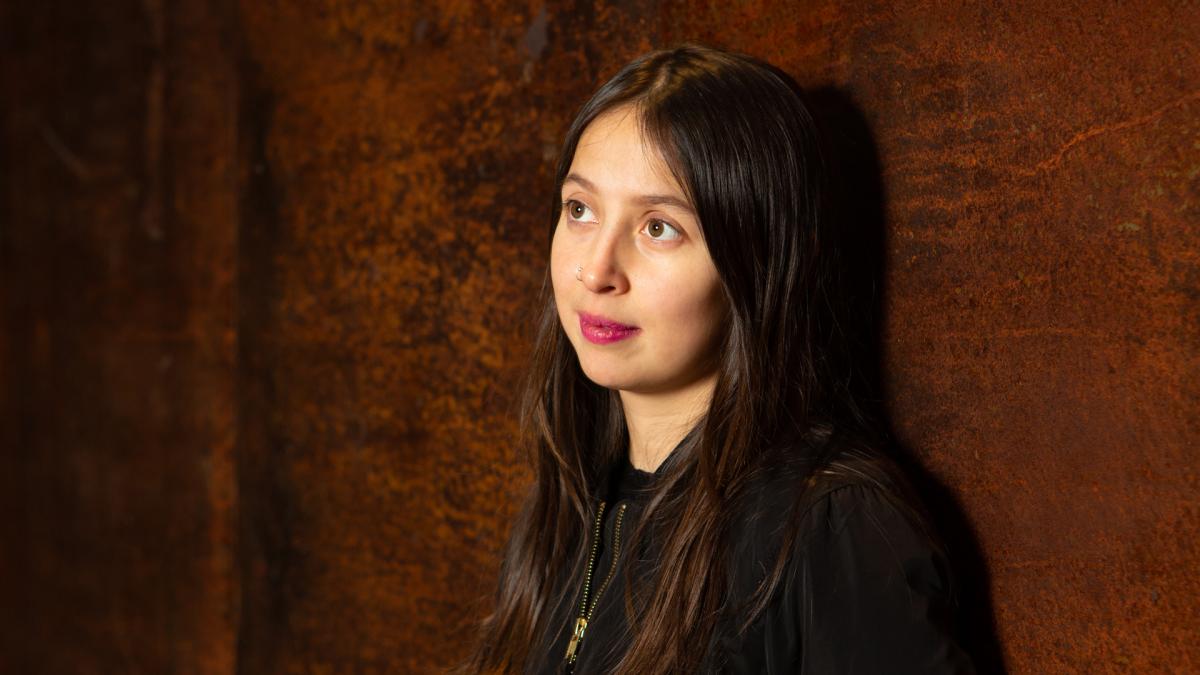Fine Arts degree student: Working with students from other degree programmes enhanced the art we were creating together
Read an interview with Paola Guzmán.

Who are you and how did you end up studying at Uniarts Helsinki?
I am Paola Guzmán, and I am 27 years old. I am from Bogotá, Colombia, and I moved to Finland in 2013. I completed my BA in Visual Arts in Colombia and came to complete an exchange programme in Scenography for film, tv and theatre at Aalto-University in Helsinki.
Whilst there, I met a Colombian teacher who recommended the Fine Arts programme at Uniarts Helsinki’s Academy of Fine Arts and I decided to apply.
Now I have finished my BA in Fine Arts programme specializing in Time and Space, and I am starting my master’s degree in January 2020.
What did you think about the admissions process?
When I applied to Uniarts Helsinki’s Academy of Fine Arts, the requirements for the first phase were a portfolio and a cover letter. In the portfolio, it was mandatory to show five pieces of work. I had different kinds of formats of work, so I decided to choose works that were not quite related to each other.
How did you prepare for the interview?
The interview process came in the second round of the examinations. We needed to create an art piece in one week, while a group of teachers did rounds visiting students; reviewing our works and asking questions. I felt that the interview was quite informal so I didn’t feel too stressed about it. The teachers asked me about the process of my artworks I was doing for the examinations and they also wanted to know why I wanted to study at the Academy of Fine Arts.
What did you think about preparing for the advance assignments?
To choose the five works for my portfolio was a bit challenging. I decided to choose the ones I felt were more connected to the topics that I was interested in arts at that time. My portfolio included video, photography, painting and installation works. I also asked for the opinion of different artists and people I knew about the works I wanted to have in my portfolio.
What has it been like to study here, and what has your experience of Helsinki been?
At Uniarts Helsinki, I have found great support in terms of materials, equipment, and spaces. I have access to the university and my studio seven days a week, 24 hours. In this studio, I can work on my artistic creations, and develop them with all the supplies and academic support the university offers.
What do you think are the two best things that describe Uniarts Helsinki?
Definitely the access to the university facilities and private studios, that is the the best benefit we can have. Also, the academy has a system called ‘studio visits’, which means that you can always book a private meeting with a teacher or invited artist in to show or talk about your works or things you are developing.
What are the most memorable projects you have been involved with?
I took part on a year long project with two students on the Composition degree programme at the Sibelius Academy. Only recently, we performed together with Lappeenranta Orchestra in Lappeenranta. The performance included music composed by the SibA students and a time and space -multimedia piece created by me and my fellow course mates. Working with students from other degree programmes was really good and enhanced the art we were creating together. Also, in our group was a friend who is a master in analog film. He is 53 years old and we both got in the same year. I was really happy to see that the university accepted him as a student; it shows that there is no specific age for studying arts. On the contrary, he has been teaching us a lot with his expertise!
What is your typical day like at university?
While at university, I am in my studio. I work there and sometimes I borrow equipment from the audiovisual material office. There you can borrow cameras, lights, mics and more. Sometimes I cook lunch or dinner with my friends. There is a kitchen facility at university where you can prepare food.
What’s been the best about studying at Uniarts Helsinki?
I have met so many people. Three years ago, I started a collective, “Kino Club”, with my classmates. We wanted to have a space where audiovisual works could be reviewed and a space for gathering and share some food. We have screenings once a month; every screening is related to a different topic. In January 2020 we will have a show called Expanded Cinema at the Exhibition Laboratory in Helsinki. We will have live installations and film screenings.
And what has been the most challenging?
I participated in a course where I received unconstructive criticism for my work. I did not agree with the methodology used for the feedback, but overall I consider our coursework and ideas are supported, and teachers give us positive ideas to improve our work.
What tip would you give to other students considering applying to Uniarts Helsinki – especially overseas students?
I definitely recommend this university for pursuing a degree in the arts. Although students outside the EU have to pay a fee, Uniarts Helsinki provide scholarships and it also provides all materials, equipment, and teaching needed to succeed during your studies.
I advise all people who want to join Uniarts Helsinki to be confident about their creations and to be bold when applying. You can also approach the students. We are eager on sharing with others and helping each other whenever possible.